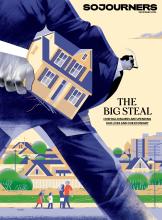Sep 22, 2017
If you went to church after Charlottesville, DACA, or the latest racial violence in your community, and were disappointed your pastor didn't speak, then it's time for you to act. Sitting and not liking what’s going on matters as much now as it did to stay in a segregated church back then. It’s time for you to find others in the congregation who are also disappointed. It’s time for you to go to your pastor and other leaders in the church. It’s time to insist he/she begin to speak justice — gospel — from the pulpit. (Pastors, it’s time for you to find those in your congregation who will stand with you as you do the same.)
Read the Full Article

Already a subscriber? Login
